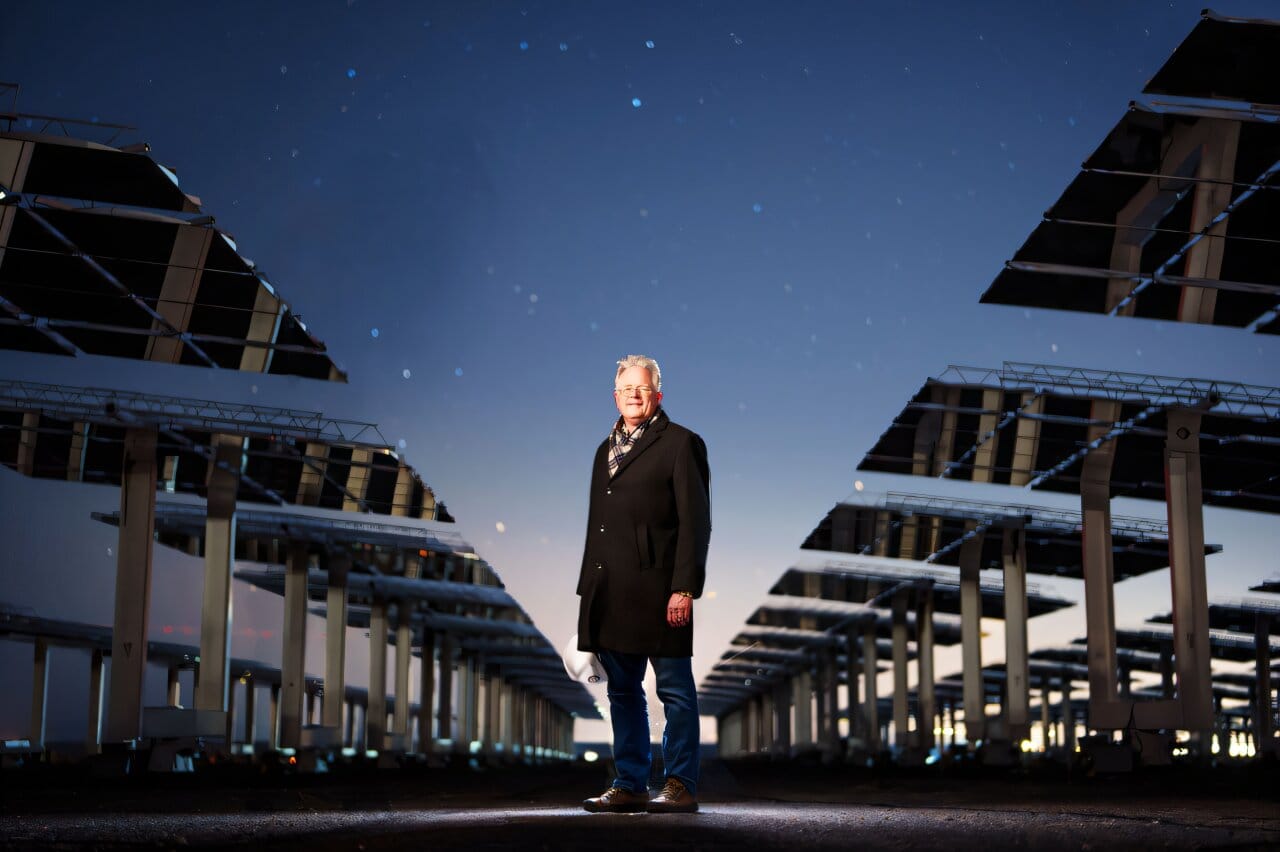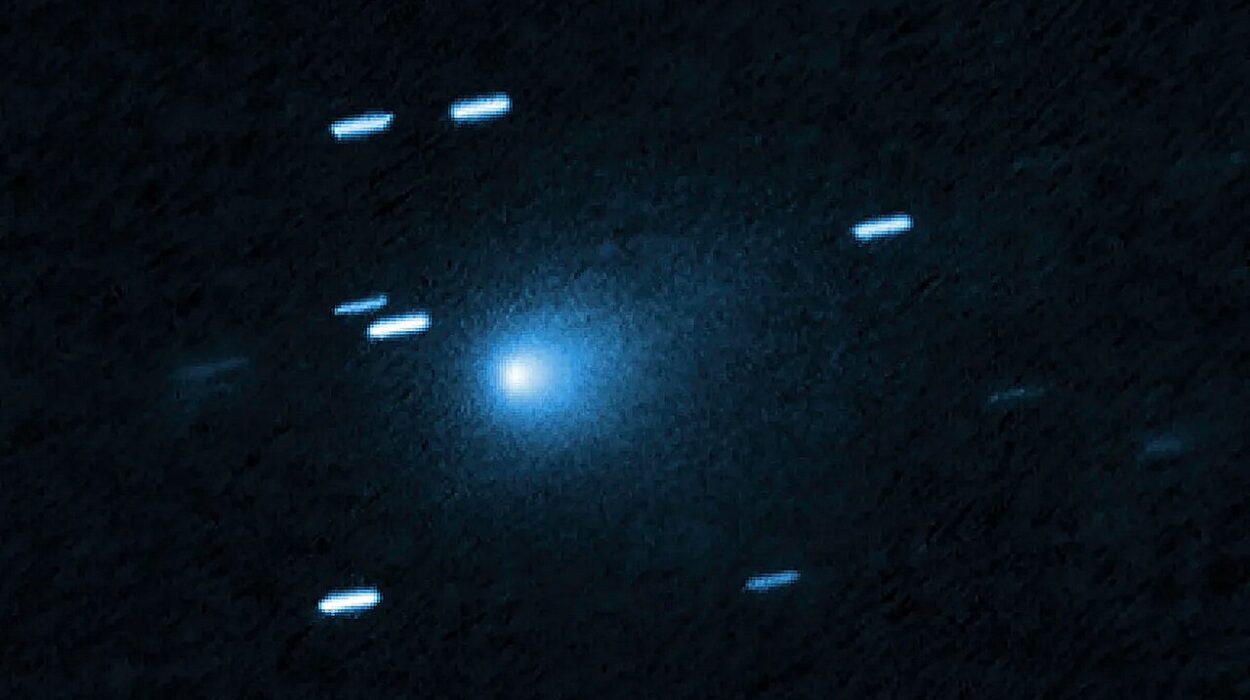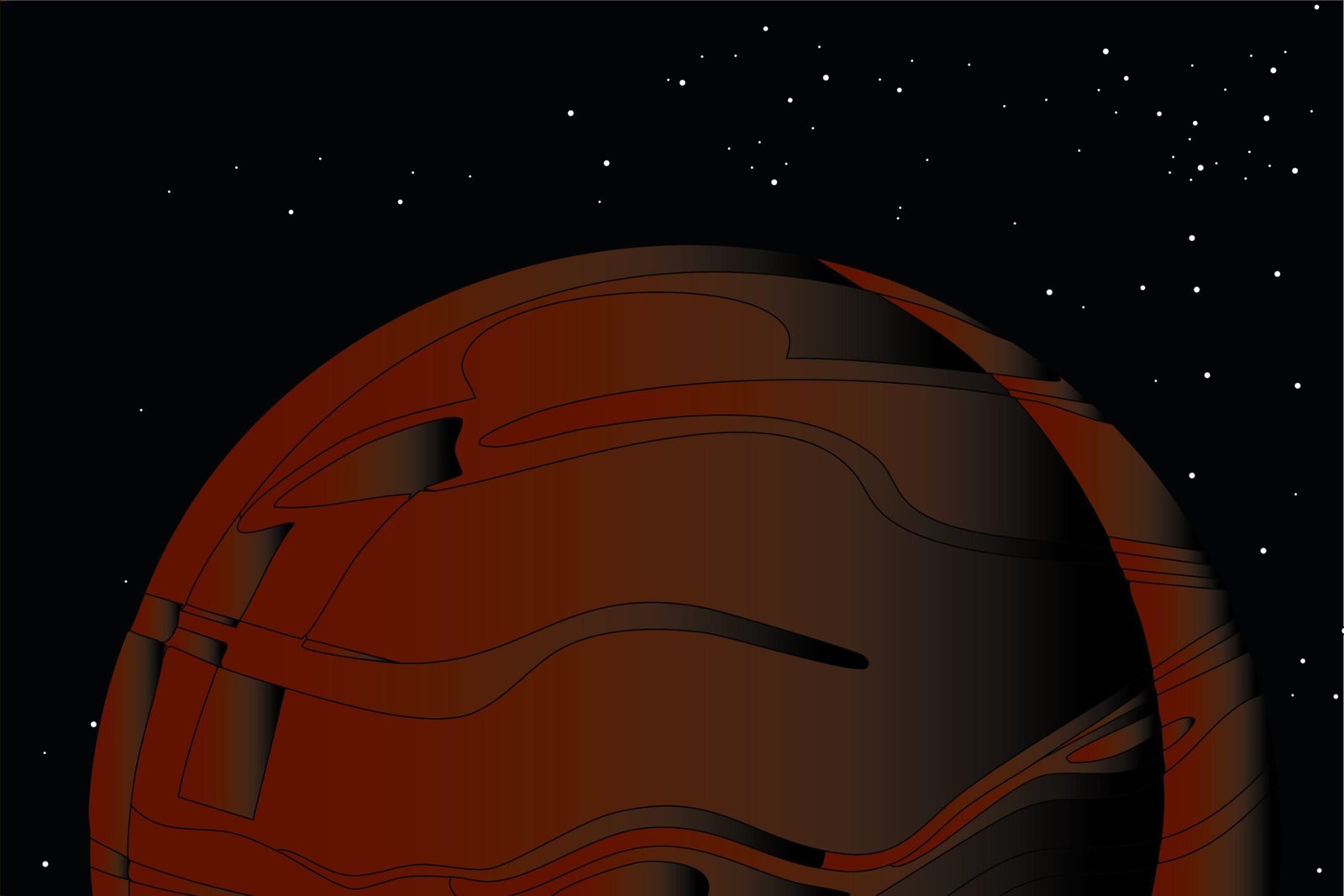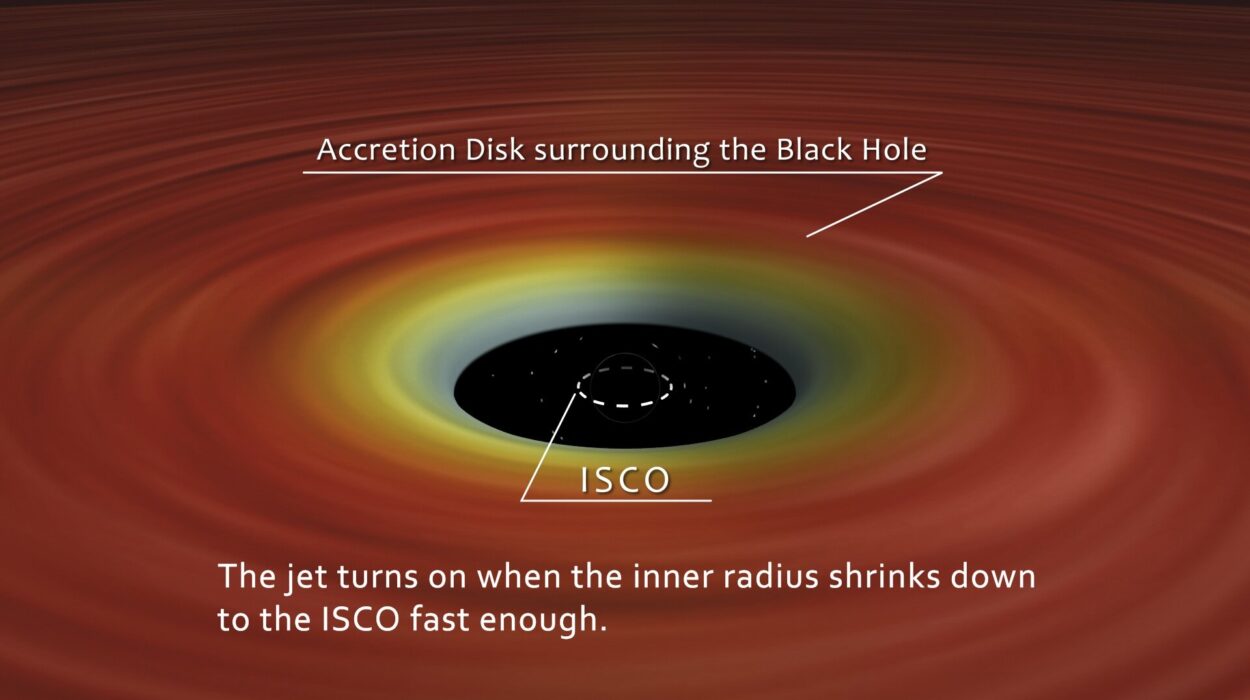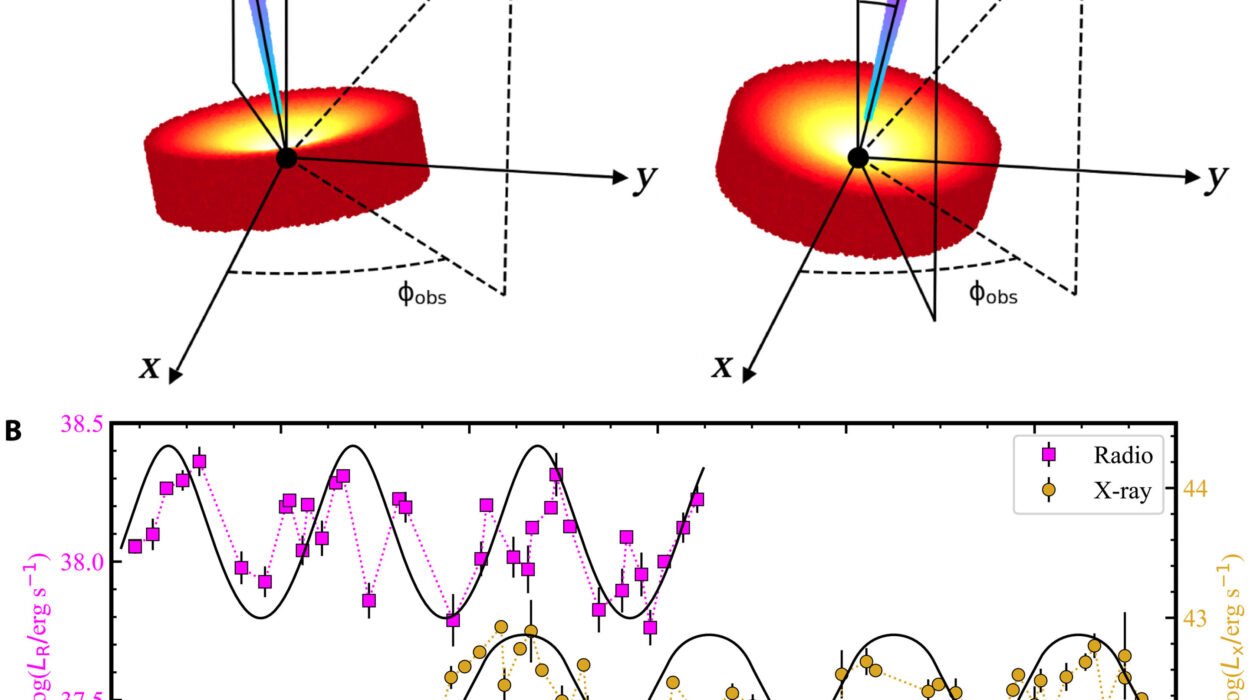By day, they blaze with purpose—gleaming like watchful eyes fixed on the sun. These are heliostats: tall mirrors meticulously engineered to follow the arc of the sun, gathering light and focusing it to generate power. At Sandia National Laboratories’ National Solar Thermal Test Facility, there are 212 of these mechanical sun-chasers. But when the sun dips below the horizon, they fall still. Motionless. Unused.
John Sandusky, a systems engineer with a rare blend of scientific rigor and poetic vision, saw not a limitation, but an untapped opportunity in that darkness. What if these mirrors, built to collect the brilliance of day, could also serve as tools for cosmic defense at night?
To Sandusky, the question wasn’t whimsical—it was urgent. In a world becoming increasingly aware of the dangers posed by near-Earth objects—asteroids large enough to destroy cities or worse—he wondered: Could this powerful solar infrastructure become a second pair of eyes on the sky, hunting for asteroids in the night?
Asteroids, Threats, and the Race Against Time
The dangers of asteroid impacts are no longer the stuff of science fiction or ancient history. In 2013, the Chelyabinsk meteor lit up the Russian sky, injuring over a thousand people without ever touching the ground. Far larger impacts have reshaped continents, even altered the course of evolution. Humanity’s challenge isn’t just to admire the cosmos, but to protect itself from it.
Traditionally, we rely on powerful telescopes housed in observatories that scan the heavens for moving objects. These telescopes take detailed images of the starfield, and advanced algorithms then search for streaks—the telltale signature of an object zipping across space. The method works, but it’s slow, expensive, and demands dedicated facilities that are costly to build and maintain.
Sandusky’s idea was radical not because it sought to replace these observatories, but because it aimed to extend and enhance them using infrastructure we already have. Instead of designing a brand-new detection system from scratch, he asked: What if we simply gave the heliostats something to do after dark?
One Night at the Tower
During a summer marked by experimentation, Sandusky ascended the 200-foot solar tower at the test facility with a vision more ambitious than the moon. He wasn’t launching rockets or using million-dollar sensors. He was repurposing technology already in place, testing how a heliostat—designed to reflect sunlight—could perform when used to reflect the dim light of stars and asteroids.
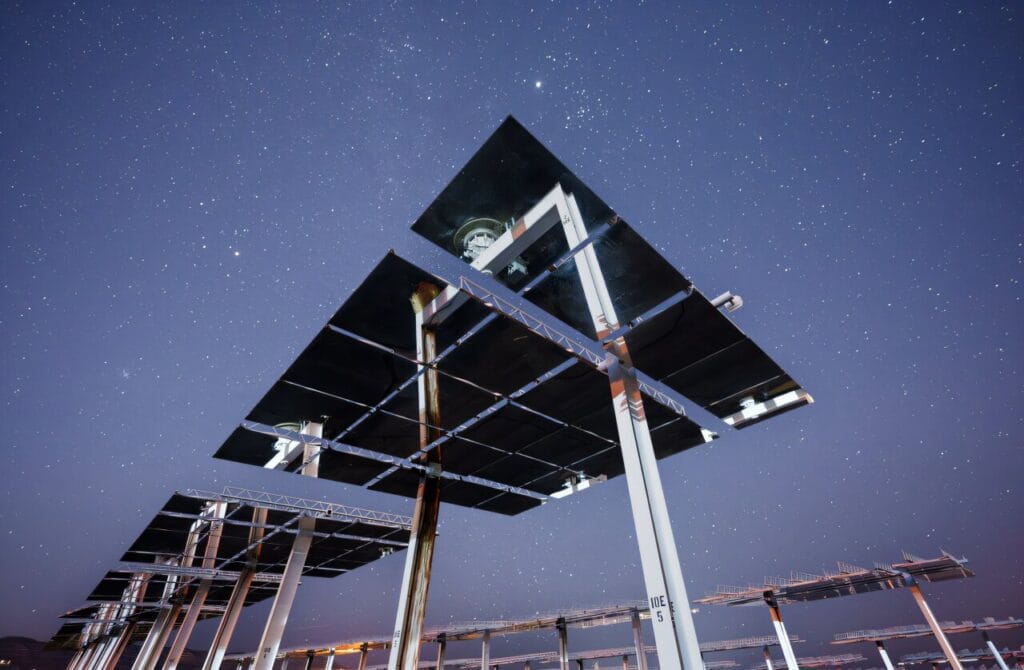
The process was surprisingly low-tech, yet profoundly creative. Using the existing control software, Sandusky programmed one heliostat to sweep gently back and forth, tracing a slow arc across the sky every minute. This movement was deliberate: by changing the heliostat’s pointing direction, it could act as a wide-angle optical collector, directing faint starlight onto sensors mounted on the tower. He wasn’t trying to capture a pretty image. He was trying to sense motion—specifically, motion that stood out from the slow march of stars.
As he sat in the darkness above the desert, watching machines whisper across the sky, Sandusky was attempting to measure not light, but speed. “I’m trying to detect the asteroid by its speed relative to the stars,” he explained.
His approach flips the usual script. Instead of taking long-exposure images and analyzing them for moving dots, his system aims to detect faster-moving objects based on how they shift position relative to the starfield, even when they appear far too dim to photograph conventionally. It’s a method closer to radar than to photography.
From Daylight to Femtowatts
What makes this method so groundbreaking is its sensitivity. Solar towers, by design, collect a million watts of sunlight—blinding amounts of energy. But Sandusky’s night vision aims to detect signals in the femtowatt range—a millionth of a billionth of a watt. That’s like trying to hear a whisper from across a football field while standing in the middle of a hurricane. And yet, it worked—at least in principle.
The experiment didn’t identify any asteroids that night. That wasn’t the goal. What it proved was that heliostats can be precisely oscillated and that they are sensitive enough to collect usable data under starlight. It was a small but critical step toward a new class of astronomical tool—one built not from scratch, but from recycled ambition.
A New Tool in the Search for Shadows
Asteroid detection is not the only potential application. Sandusky believes the system could assist the U.S. Space Force, especially when it comes to tracking satellites and spacecraft in the cislunar region—the vast, lightly monitored zone between the Earth and the Moon. This region is quickly becoming a strategic frontier, but its enormous distances and orbital complexities make it notoriously hard to surveil from ground-based systems.
Heliostat fields, which can be spread across multiple locations and controlled remotely, offer a possible solution: a flexible, low-cost, scalable sensor network that could one day operate globally.
Imagine a world in which solar fields, after soaking up the sun all day, shift their gaze skyward at night—not to rest, but to defend Earth from what the universe might throw our way.
The Case for Reinventing the Ordinary
What Sandusky’s work reveals is not just a clever hack or a budget-friendly idea. It’s a philosophy. In a world obsessed with building new solutions, this experiment is a reminder that sometimes the answers lie hidden in what we already have, waiting for us to ask a new kind of question.
Why should a heliostat’s day end at sundown? Why should mirrors only reflect sunlight when starlight still glows? Why assume that tools must remain in the boxes we built for them?
This isn’t just about optics or engineering. It’s about how we see. It’s about the beauty of repurposing knowledge and the courage to see beyond the limitations of a machine’s design. The heliostat, built for one job, has quietly applied for another.
The Road Ahead
For now, the technology remains in its early stages. Sandusky and his team are analyzing data, seeking feedback from the wider optics and asteroid-hunting community, and looking for collaborators. One proposed next step is to track a known planet using the system—something bright and predictable—to better understand the technology’s sensitivity and limitations.
Eventually, the dream is to scale up: use dozens or hundreds of heliostats across the country in coordinated sweeps, increasing coverage and enhancing sensitivity. Even small asteroids, difficult to detect with traditional telescopes, might reveal themselves under this new scrutiny.
A paper detailing the experiment has already been published in the 2024 conference proceedings of Unconventional Imaging, Sensing, and Adaptive Optics. Interest is growing.
But Sandusky knows the path ahead is long. Scientific credibility requires not just innovation, but peer validation, skepticism, and iteration. “We want to hear from our peers,” he says. “Getting feedback provides an opportunity to understand what the concerns are about how this technology will work.”
When the Stars Return the Gaze
For centuries, humans have looked to the stars with wonder. We’ve built temples, clocks, telescopes, and satellites in pursuit of celestial knowledge. But the threat of a rogue asteroid reminds us that the universe is not just beautiful—it’s dangerous. And that knowing what’s out there is not a luxury. It’s a necessity.
John Sandusky’s experiment is more than a clever adaptation. It’s a poetic inversion. He has taken tools designed to follow the sun—and turned them toward the night. And in doing so, he has given us a glimpse of what happens when we reimagine our boundaries and challenge what machines—and minds—can do.
In the silence of the desert, amid the ticking of mirrors and the hum of data, humanity has found a new way to look into the darkness—not with fear, but with focus.
And perhaps, someday soon, thanks to a field of forgotten mirrors, we’ll spot the next asteroid before it finds us.
Reference: John Sandusky et al, Prospect for cislunar spacecraft and near-earth asteroid detection using heliostat fields at night, Unconventional Imaging, Sensing, and Adaptive Optics 2024 (2024). DOI: 10.1117/12.3028242
